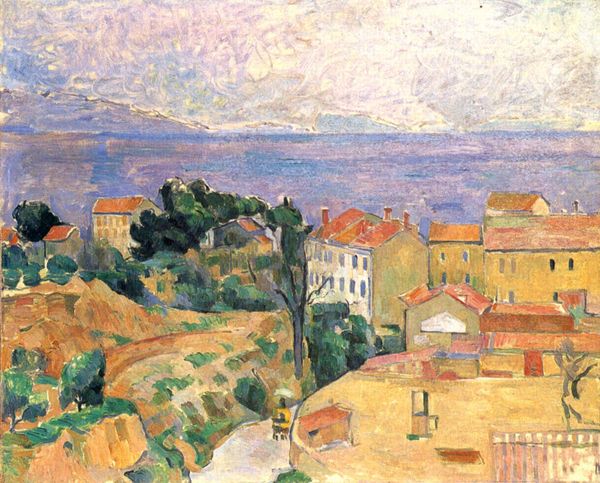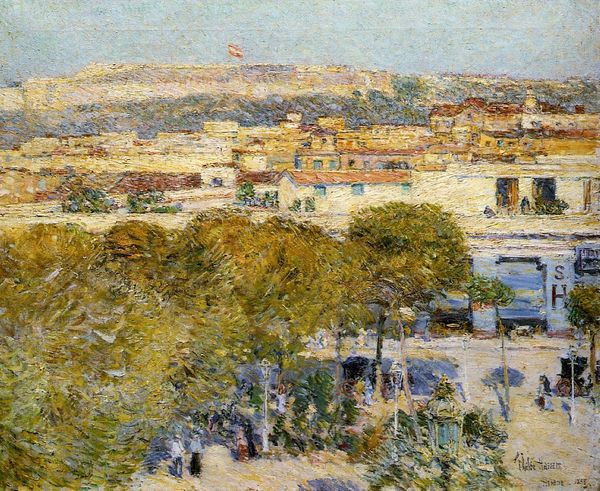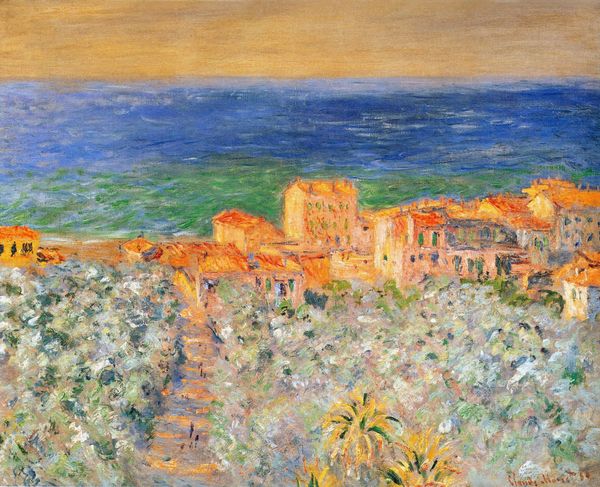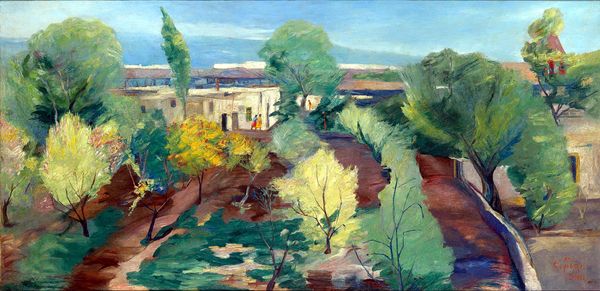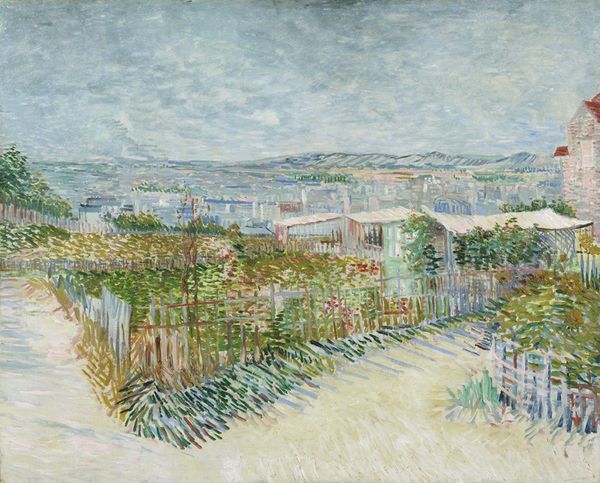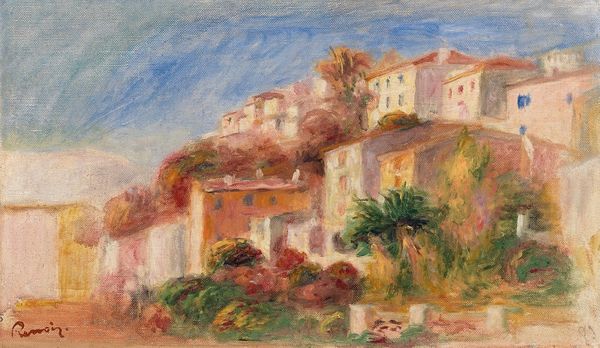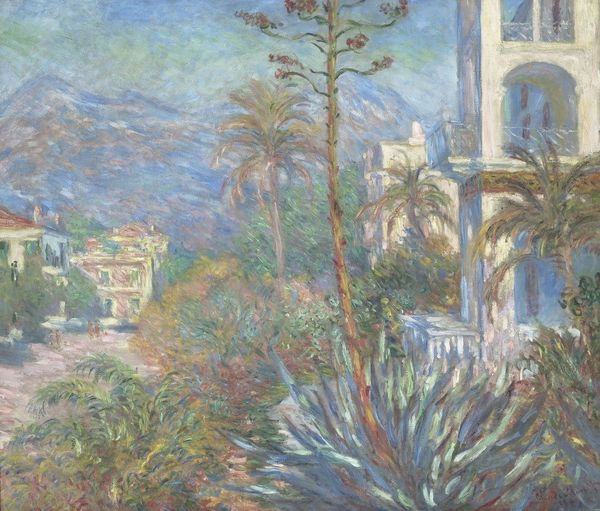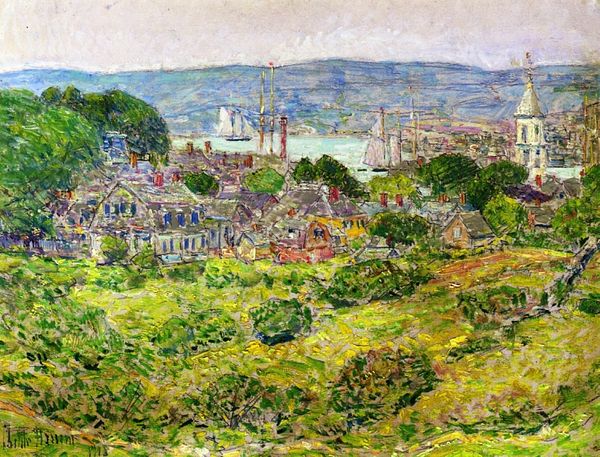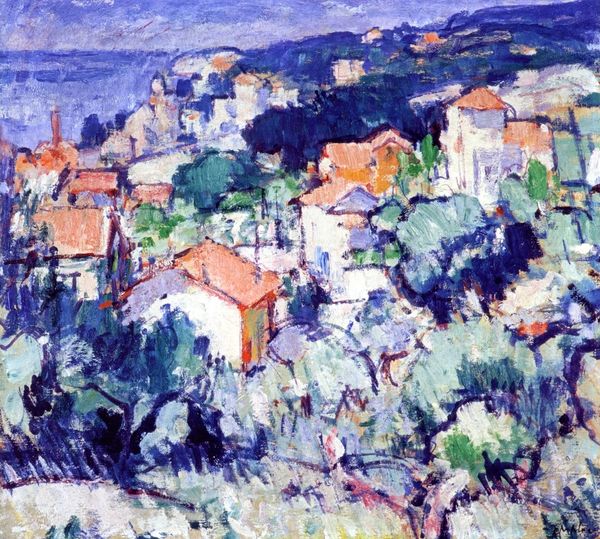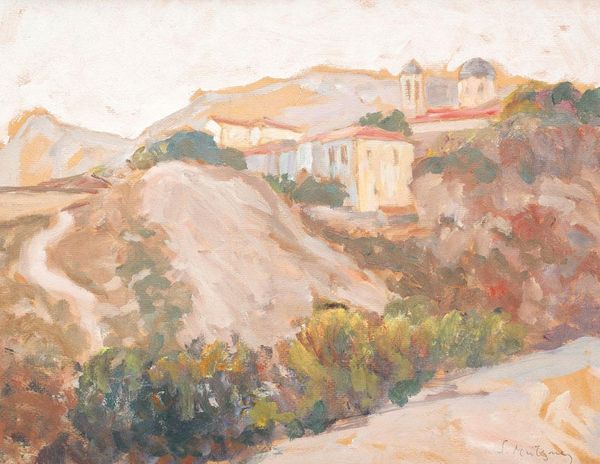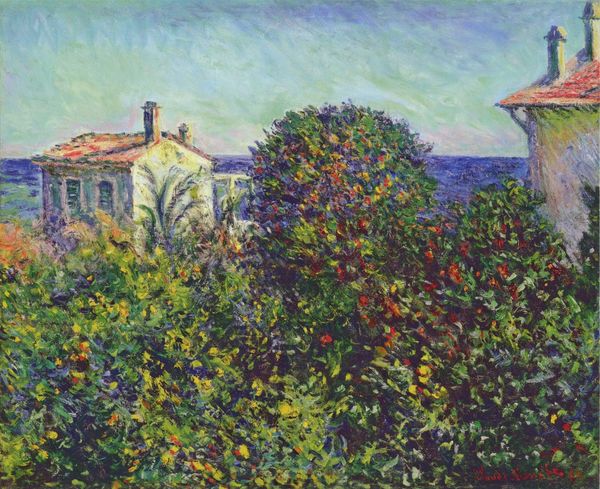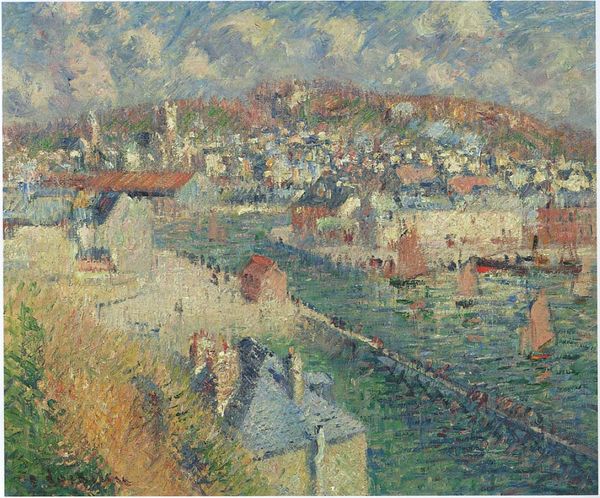
Copyright: Public domain
Childe Hassam's "Naples" offers us a glimpse into the allure of early 20th-century European travel through the eyes of an American Impressionist. Hassam, who lived through a period of massive industrial and social change, often turned to landscape painting to capture scenes of an increasingly mobile and interconnected world. Painted in the style of Impressionism, this artwork serves not only as a visual record of Naples, but it evokes a sense of place, emphasizing the atmosphere of a bustling urban environment nestled into a vibrant hillside. In this painting, we see how class and gender dynamics are subtly at play. The figure walking below, perhaps a local worker, represents the everyday lives that supported the city’s more privileged classes, who had the resources and leisure to enjoy the views and lifestyle that Naples offered. Consider how the painting balances the grandeur of the city with the intimate, individual experiences of its residents. What does it mean to capture a place, and whose stories are told—or left out—in that portrayal?
Comments
No comments
Be the first to comment and join the conversation on the ultimate creative platform.

